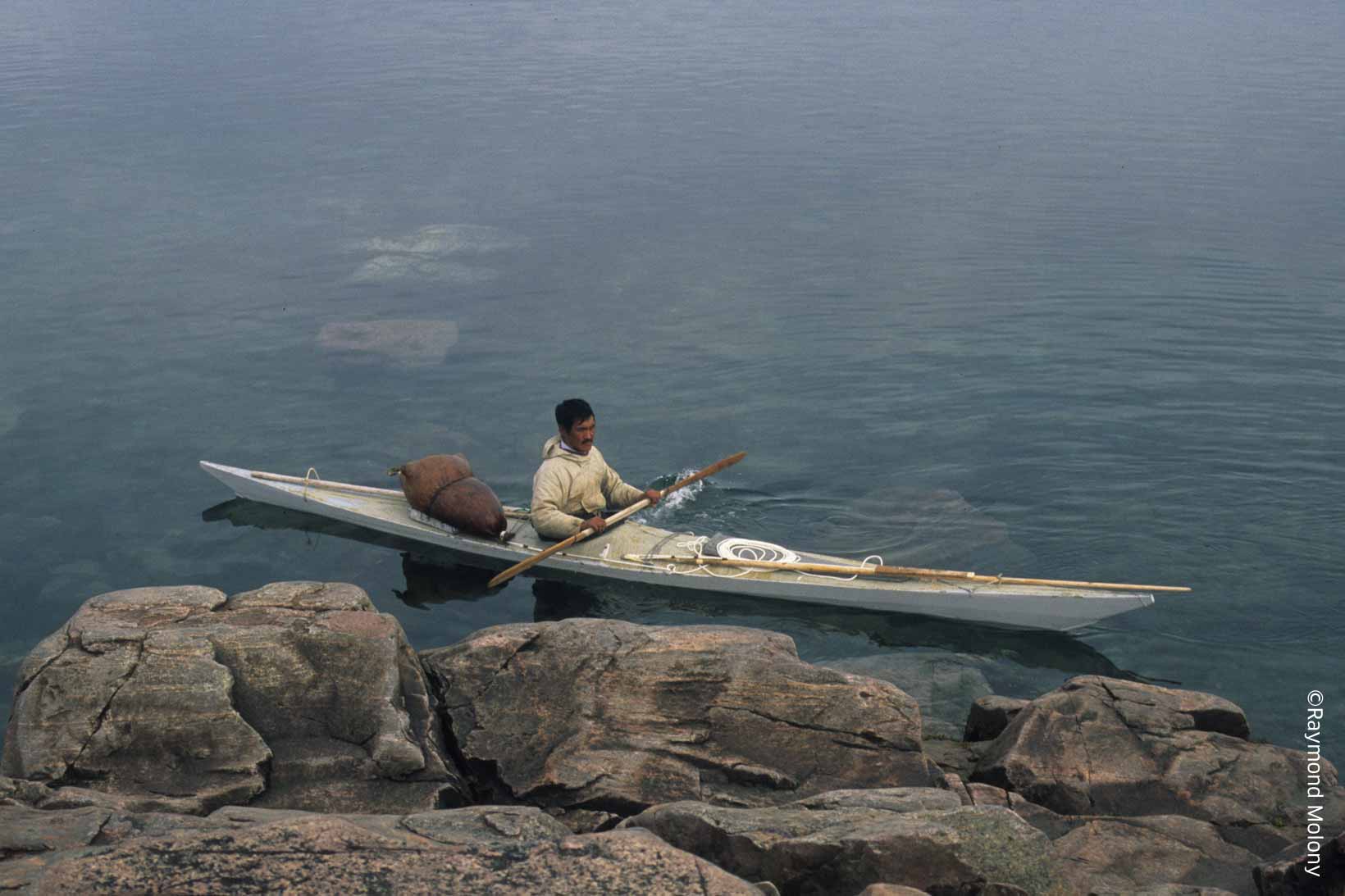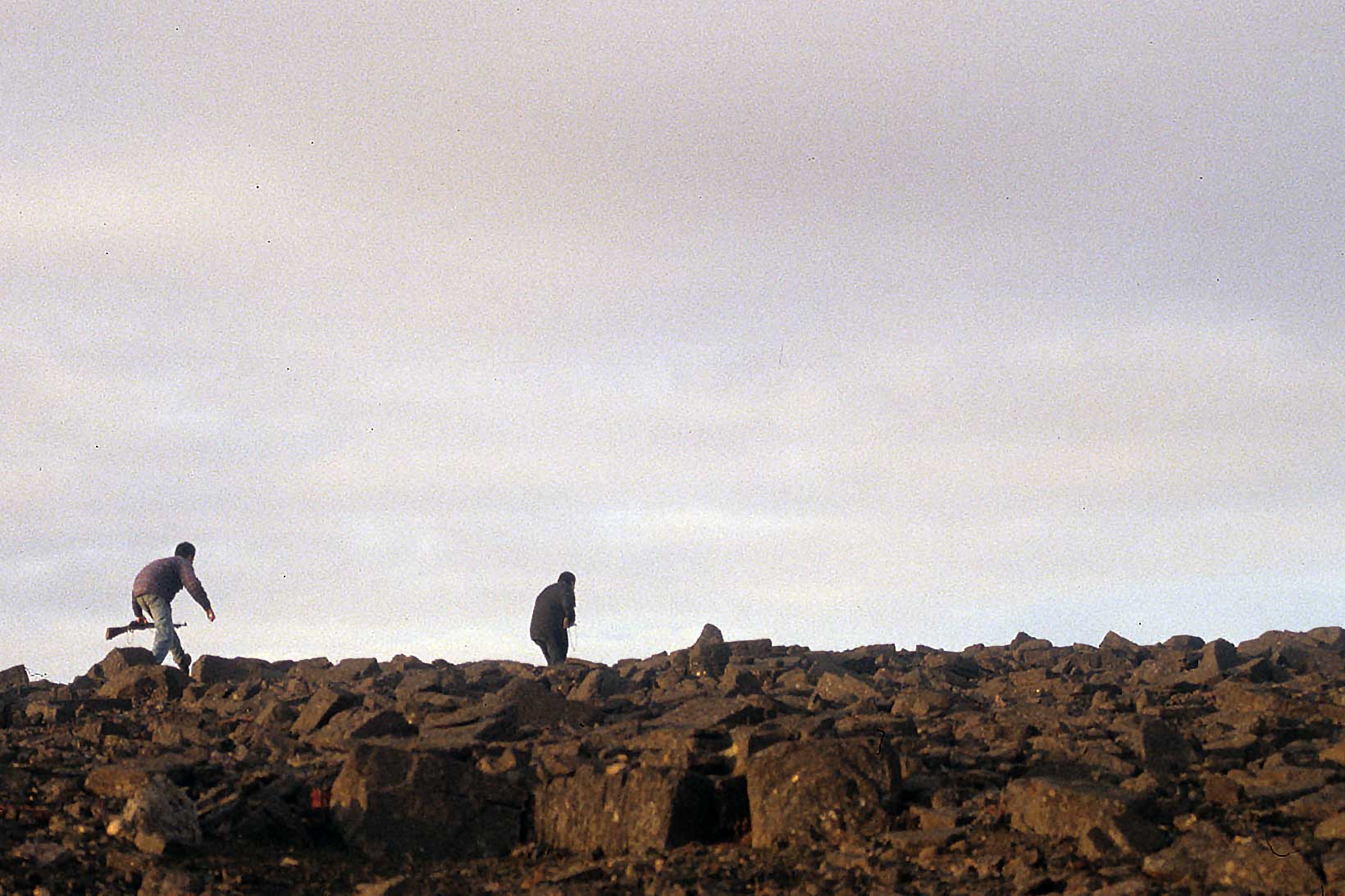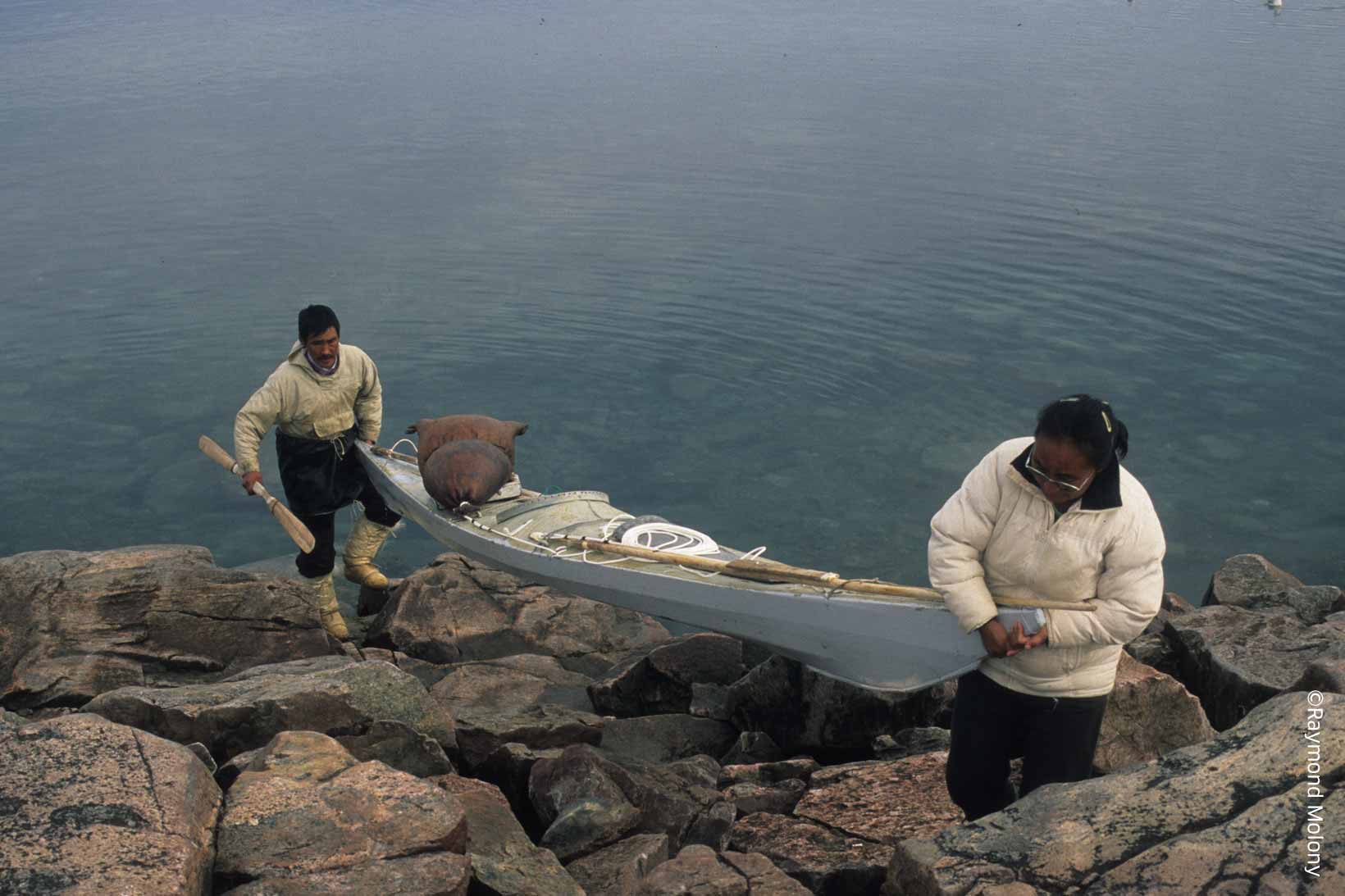Climate change may benefit some people who live in the Arctic, but may not be so good for others.
Winners or losers?
For each of the people below, list the ways in which their life is changing or has changed. Do you think they are a winner or a loser with the changes affecting their homeland?

Aviaq, a subsistence hunter from Qaanaaq, Greenland
Today the temperature is -25 degrees Celsius. I can ring my fellow hunters in Qaanaaq from 20 kilometers to check on the ice conditions. It is March and it is one of the best times to travel on the ice for hunting seals. The last 10 years have seen my travelling time on the ice reduced by up to two weeks every year. However my wife has got more work at the local hotel catering for the increasing number of tourists who wish to visit this part of the High Arctic. This will help us to buy a better speed boat which will allow me to cater for more tourists during the ice free period in July and August.

Danish sailors
We are part of the Danish navy which patrols this part of Greenland. The latest satellite images have told us that we will be able to travel as far north as 80°N to the Humboldt Glacier during the month of August. Nowadays there is an increasing number of expedition cruise ships visiting the area and one of our duties is to provide rescue assistance in case of ice bergs striking these ships. Today we are delivering 25 drums of fuel to enable a planeload of scientists and wealthy tourists to see an eclipse in Inglefield land.

Hunter, Siorapaluk
It is April and I have been hired by the local priest who is performing a wedding in the village of Siorapaluk. Our village is the most northerly indigenous settlement in the world with a population of 62 people. We make our living from subsistence hunting of animals such as seal, walrus and polar bear. We are worried about the changing climate conditions which are affecting our village. My fishing nets under the ice were destroyed by unusual shifting ice at Kangeq last September and I was afraid to go out ice fishing on the sea ice during the dark time. I did however use the time to carve some carvings which I can sell to the tourist shops in Qaanaaq. Next week I will travel north to the Humboldt Glacier to try and catch a polar bear. This will provide fresh meat for our family and my wife will sew me a new pair of trousers from its skin.

Tourist officer, Qaanaaq
My name is Hans and we have had an increasing number of expedition cruise ships visiting the High Arctic. This year 1300 of these tourists came to experience the lifestyle of today’s Inuit and buy some gifts from our local crafts people

Hunter, Qeqertat
It is after midnight and we are setting out to hunt for narwhal near the village of Qeqertat in Inglefield fiord Greenland. During this time of year in August the narwhal come to try and feed on the polar cod in the fiord. According to the North Atlantic Marine Mammal Commission (Nammco) Inglefield Bredning region which includes Qaanaaq and Qeqertat would have a quota of 98 with 98 landed in 2018. Hunters get an individual quota which is decided by the local hunters association. The meat is divided up in a communal manner according to local traditions. Tonight three hunters will attempt to get within throwing range of one of these animals. Their raw skin called Muktuq is an important source of vitamin C as we cannot grow fresh vegetables at 77°N latitude. I have made my kayak and its associated equipment from a mixture of local and imported material. We have found this to be the most appropriate technology for operating at these high latitudes in 24 hour daylight at this time of the year. However the increasing number of calving glaciers is making this type of hunting more dangerous than it used to be in the past.

Hunters, Qaanaaq
It is 2 am in the morning at 78°N of the equator. We have travelled to Inglefield land to hunt for our allocated quota of caribou and musk oxen. We have used our speedboat to travel from Qaanaaq on a trip which will last about 4 days. Modern technology allows us to access these areas more quickly than in the past. The temperature is 2°C but we have shed our heavy anoraks in order not to sweat too much. We are tracking the animals which inhabit a narrow belt of land between the sea and the Greenland ice cap. Inglefield land has several abandoned settlements, but I wonder will global warming enable us to reoccupy old settlements and hunting sites like Etah on a more permanent basis.

Inuit children
We have borrowed some of our Fathers’ kayaks. I want to be a hunter. Tonight I will practice the skills which I will need to be a successful hunter. Some of my friends say that this job is too difficult and does not pay enough money. They talk of taking service jobs in Qaanaaq or migrating to the commercial fishing in West Greenland.

Nina, Qaanaaq
My name is Nina and I am a hunter’s wife living in the Greenlandic village of Qaanaaq in northern Greenland. I help my husband by making some of his clothing and by processing our hunting catch during the year. It is vital that my husband’s clothing is well made as it keeps him alive in the extreme conditions experienced in the High Arctic. This year my mother and I prepared all the material that my husband needed to repair his kayak. We usually have to do this every two years, even with the more modern materials we use on today’s kayaks. However I am the main income provider which I receive from cooking meals at the local hotel for the few tourists and officials who venture this far north. Our new computer is helping me to study for a midwife qualification through distance learning.
